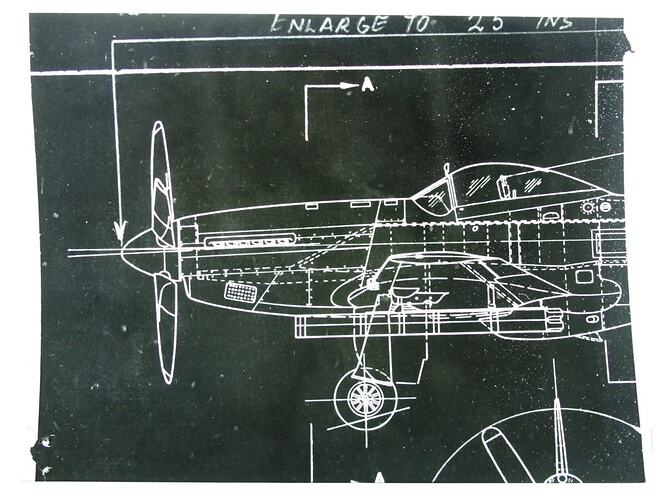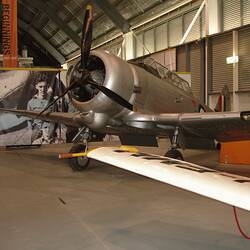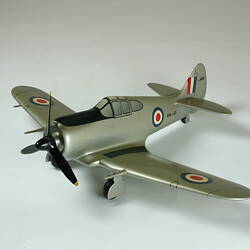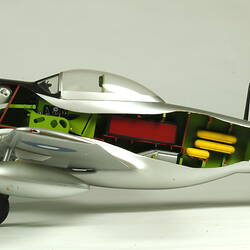The Mustang was designed as a private venture by the US manufacturer North American Aviation. Company designers Raymond Rice and Edgar Schmued produced the design concept for the NA-73 in response to a 1940 British Purchasing Commission suggestion that the company build the Curtiss P-40 for Britain. From design to prototype took just 102 days with the first flight occurring on 26 October 1940. It was a measure of either confidence or desperation that a British order for 320 NA-73 aircraft had already been placed on 26 May 1940. The British named the aircraft the Mustang I with the first being delivered in late 1941 and used operationally for the first time in July 1942.
The United States Army Air Force evaluated the aircraft, which they called the P-51 & P-51A, and placed an order for 460 aircraft. Despite good speed at low level for ground attack, the aircraft was handicapped by its General Motors Allison V-1710 engine which did not provide the power required for higher altitude air combat roles and failed to fully exploit the Mustang's highly efficient 'laminar flow' wing. The substitution of the Rolls-Royce Merlin in Britain proved to be the answer and the resulting P-51B & C (Mustang II & III) were quickly established as long-range escort fighters during the USAAF daylight strategic bombing campaign over Germany. The 1944 P-51D (Mustang IV) was radically redesigned with a new fuselage and 'bubble hood' giving excellent visibility for the pilot. Armament was increased from four to six .50 calibre machine guns.
In April 1943, the Mustang was selected by Lawrence Wackett for production by the Commonwealth Aircraft Corporation at Port Melbourne. A P-51D was delivered in 1944 for use as a pattern aircraft. Tooling was received from North America. The CAC CA-17 Mustang Mk. 20 first flew in May 1945 although the number required was cut back due to the end of the war with Japan in August 1945. Eventually CAC produced 200 Mustangs by 1951 with the designations CA-17 and CA-18. These used different Merlin engine models and some were equipped with cameras. In addition there were 298 US-built Mustangs delivered to the RAAF in 1945 but these did not see combat before the end of the war. Many were flown to Japan as part of Australia's contribution to the British Commonwealth Occupation Force (BCOF). In Italy, 3 Squadron RAAF had received RAF Mustangs in 1944 and flew them in combat until May 1945.
The last RAAF BCOF Mustang unit in Japan, 77 Squadron was about to return home when the Korean War broke out in June 1950. The Squadron was immediately deployed to Korea and bore the brunt of early fighting before being re-equipped with the Gloster Meteor jet in 1951. The Mustang remained in use with RAAF Citizen Air Force units until the late 1950s. Some surplus Mustangs were used as targets during the nuclear tests at Maralinga, South Australia. In recent years the Mustang has enjoyed popularity as an airshow performer and a large number are flying or under restoration worldwide.
More Information
-
Keywords
-
Localities
-
Authors
-
Article types




